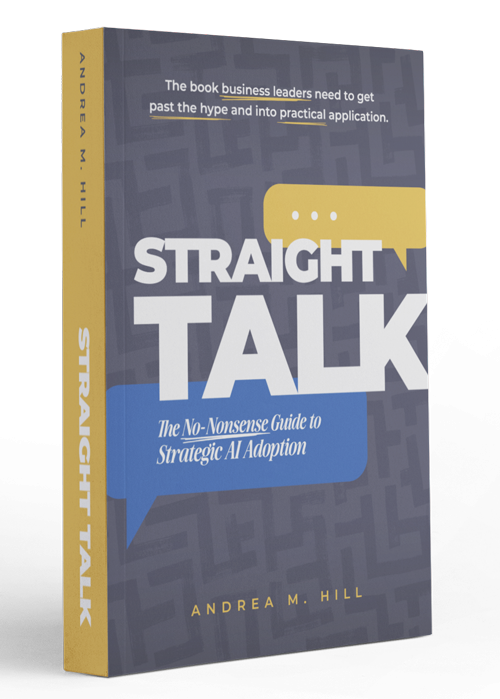Marketing Automation: What It Is and How to Use It Effectively

In today's marketing landscape, businesses are constantly seeking ways to connect with customers and prospects.
Every day we are bombarded with emails, newsletters, messages, social media ads… As marketers, our job is to target our audience at the right place and time, but as buyers we empathize with the stress of receiving hundreds of unwanted emails every single day.
What’s groundbreaking in today’s marketing practice is that we don’t have to target our prospects with a series of lookalike unwanted emails. Nowadays we have the tools to craft personalized messages that deliver at the best time to the right audience.
This is the magic of marketing automation: a powerful tool that helps businesses do just that. By automating repetitive tasks, companies can save time, improve their efficiency, and focus on engaging customers more effectively. These automations can allow businesses to deliver personalized experiences that drive growth and success.
But in detail… What is Marketing Automation?
Having accurate data is crucial for effective decision making. Clean data enables better decision making at all levels of a business. By providing accurate and up-to-date information, clean data empowers businesses to make informed decisions that drive growth and success. For example, a retailer with clean sales data can better predict customer demand and optimize their inventory levels accordingly. This not only reduces costs and increases profitability, but it also improves customer satisfaction.
Marketing automation refers to the process of using software to automate marketing tasks. It can help with a wide range of activities, including:
- Email Marketing Automation: Send personalized emails automatically based on a customer's actions and preferences. This includes welcome messages, follow-up emails, and targeted campaigns designed to nurture leads and drive conversions.
- Lead Generation and Nurturing: Capturing leads with forms, landing pages, and pop-ups, then nurturing the contacts with personalized communication.
- Customer Segmentation: Segmenting your customers based on behavior, demographic, geographic, and other factors to help focus your marketing efforts.
- Social Media Automation: Automating the scheduling and publication of content on social media sites helps your customers monitor interactions and track their social performance.
- Campaign Management: Managing marketing campaigns across various channels streamlines the process of running marketing campaigns, ensuring that your resources are used effectively.
- CRM Integration: Integrating with CRM (customer relationship management) platforms to coordinate sales and marketing efforts and provide a smooth client experience.
- Analytics and Reporting: Tracking the performance of marketing campaigns and generating reports to identify areas for improvement and measure success.
How to Use Marketing Automation
- Choose the Right Platform: The first step is selecting a marketing automation platform that suits your business needs. Popular options include HubSpot, Mailchimp, and Salesforce.
Not sure where to start? You’re in luck: our company does just that! We're technology agnostic and we partner with industry leaders to identify the perfect platform fit for your needs, budget, and goals. Schedule a free consult!
- Set Goals: Make sure you know what goals you plan to achieve with your marketing automation, whether it is to improve customer interaction, gather more leads, or have better conversion rates.
- Segment Your Audience: Use the platform to segment your audience based on your chosen criteria to allow for more personalized marketing efforts.
- Automate Workflows: Create workflows that automate processes like notifying prospects who have downloaded an offer, welcoming new subscribers with emails, and reminding cart abandoners to return to their carts to checkout.
- Use Triggers: Define the triggers that kick off automatic processes. For example, a welcome email can be sent when a user signs up for your newsletter.
- Develop Content: Provide content that fits in with your automated workflows and speaks to your audience. Landing pages, social media posts, email templates, and more should be focused on attracting, engaging and delighting your audience all through the buyer’s journey.
- Monitor Performance: Regularly monitor the performance of your automated campaigns. Use your analytic tools to understand what’s working and what is not. Understanding your performance will help you make adjustments to improve results.
Personalization is key in marketing, and marketing automation helps you do just that. By streamlining your business and enhancing your marketing efforts and operations, your company may increase productivity, improve audience engagement, and generate better business results by automating repetitive tasks and using data-driven insights.
Andrea Hill's
Latest Book
Straight Talk
The No-Nonsense Guide to Strategic AI Adoption

Where other books focus on prompts and tools, this book gives business leaders what they actually need: the frameworks and confidence to lead AI adoption responsibly, without having to become technologists themselves.
Also available at independent booksellers and public libraries.
Are You Ready to Do Better Marketing?
WerxMarketing is all about performance marketing. That means giving you the tools you need to connect with customers, enable your sales efforts, and turn leads into loyal customers. Ready to learn more about how we do that? Book a free consult and bring your questions. See if you like working with us on our dime, and get some good advice in the process.